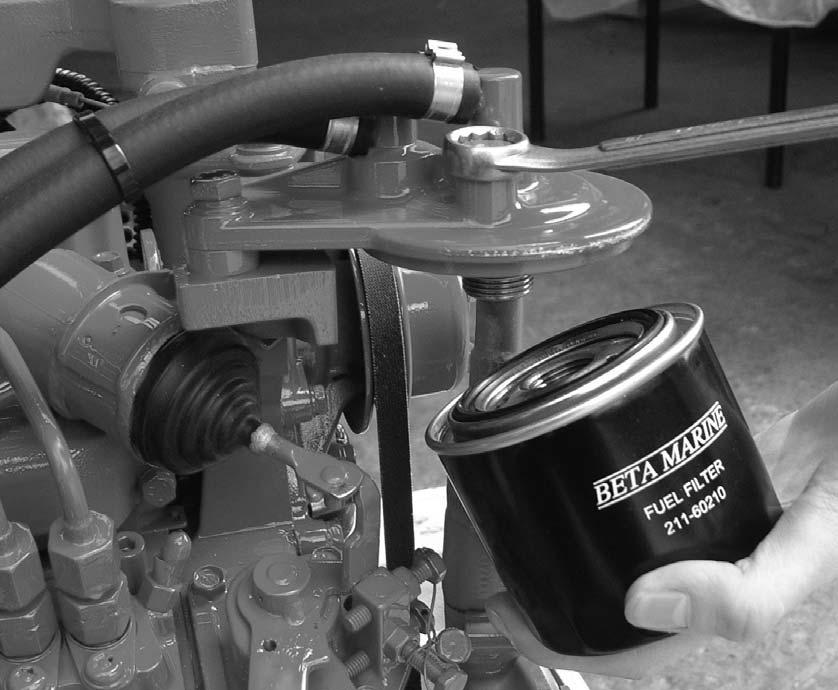
2 minute read
Fuel system - fuel/water separator, fuel lift pump, fuel filter
Important
• Always fit a fuel/water separator in the fuel supply system. Water in the fuel can seriously damage the injection system. • If a fuel supply shutoff valve is fitted do not use a taper tap, only use a ball valve tap. The ball valve type are more reliable and less likely to let air into the fuel system. • Be sure to use a strainer when filling the fuel tank. Dirt or sand in the fuel may cause trouble in the fuel injection pump. • Always use diesel fuel. Do not use paraffin / kerosene, which is very low in cetane rating, and adversely affects the engine. • Bio-diesel fuel can be added to the normal diesel fuel up to a maximum limit of 5% without affecting the warranty. • We know that some customers are using 100% Biodiesel fuel, Important; Beta Marine warranty will not cover fuel equipment when more than 5% Bio-diesel is used. If you use Bio-diesel fuel you must fit an electric lift pump into the fuel supply line and the fuel filter and oil filter must both be changed together when the oil filter is normally replaced. • Be careful not to let the fuel tank become empty, or air can enter the fuel system, necessitating bleeding before next engine start. • The fuel lift pump will only lift fuel through 0.25m.
If this is insufficient then an electric fuel lift pump must be fitted. Drawing 202-06421, illustrating recommended wiring for this pump is included in the back of the manual.
Fuel Filter Replacement
1. The fuel filter is a spin on type. Remove by turning anticlockwise when viewed from below.
2. Replace the fuel filter cartridge every 750 hours or every 2 years. See photo 27. 3. Apply fuel oil thinly over the gasket and tighten into position - hand tight. 4. Bleed as detailed - see ‘initial start up’. 5. Check for leaks.
6. Do not get fuel on the flexible mounts, this will degrade the rubber.
27
22 Heat Exchanger Cooled
Fresh water ‘coolant’ circulates through the engine and then the heat exchanger body where the engine heat is transferred to the sea water that is pumped through the heat exchanger cooling tubes (tube stack). The heated sea water is then injected into the exhaust system (see diagram).








